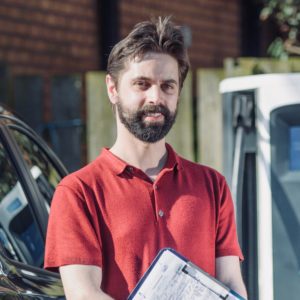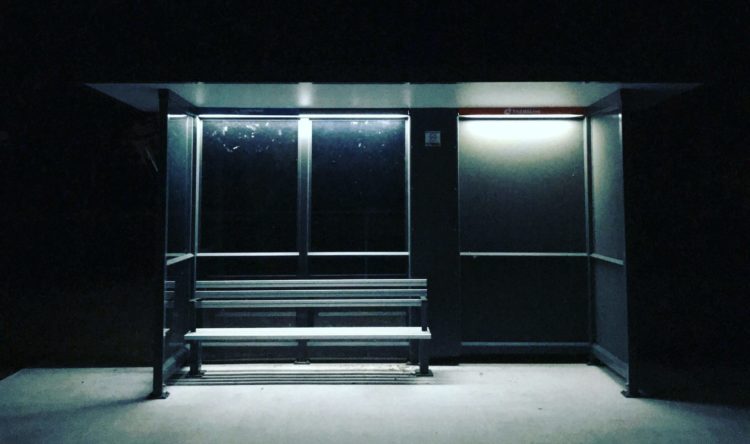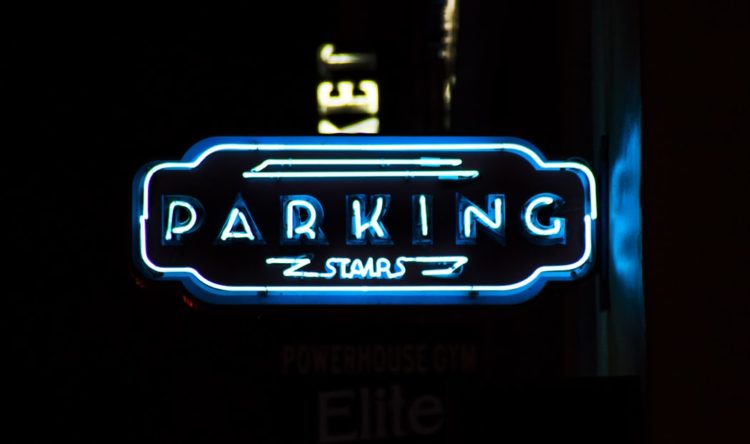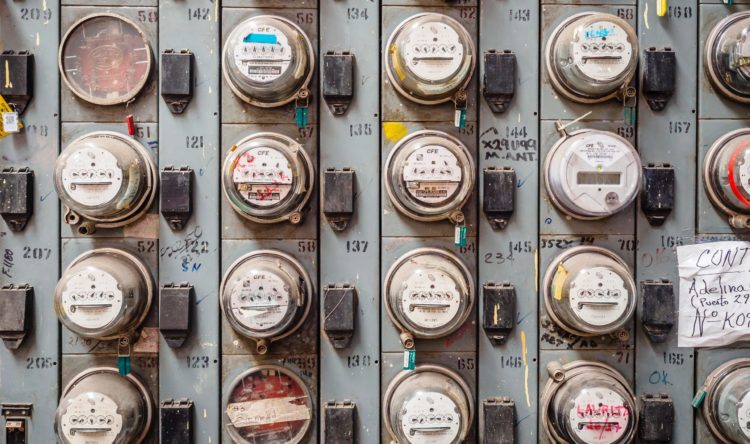Plug and Play!
A rather extensive guide to EV charging for driving instructors
by Rob Cooling,
I’m an ADI from Nottingham and I only teach in a fully electric Nissan Leaf. This series of articles covers the realities (no fairytale figures) of life in an electric car both as a driving instructor and for family use. This time I’d like to look in detail at the charging network.
After so long being used to petrol, diesel and maybe LPG the charging options for electric cars can initially seem just a tad confusing. Even if it is baffling the good news is this will gradually standardise and simplify. Regardless you soon get used to it, like everything it seems complicated until you’ve done it a few times. Although it’s nice to learn about the details don’t let any complexity or minutia overly concern you, all that really matters is you can plug it in and enjoy the car. On that level it’s pretty simple and a lot of fun.
Home Charging
Assuming you have a driveway you can have a home charger installed on your house, in my opinion this is one of the greatest features of an EV (electric vehicle). Current stats show that 90%+ of all charging is done this way. A standard 7kW home charger will add about 30 miles per hour, so if you sleep for 7 hours you’d produce 210 miles just during that time, whereas an ICE (internal combustion engine) car always requires a specific journey to the petrol station to refuel. I personally function 95% off my home charger and I tend to use the public infrastructure out of choice rather than necessity. A home charger will cost about £70-£360 for a 7kW model, they are subsidised by the government and car manufacturers hence the price variations. It is possible to get the slower 3kW models for free but I wouldn’t recommend it. Waking up every morning to 100% battery is fantastic and the novelty doesn’t seem to wear off (I’ve had 4 EV’s so far), I rarely use the whole battery in a day because my 80 mile daily average is well within the cars 100-140 mile battery range based on my 30kWh Leaf.
Destination Charging
This is another unique and exciting advantage of the EV. I can go to the local swimming baths and while I’m there my car charges off the 7kW posts in the car park. I can go to Asda and while I’m shopping my car is charging, I’ve done this a couple of times at holiday homes just using the 3 pin plug (runs at 2kW) and later this year I’ll be using Centre Parcs 7kW destination chargers in their car park. The way you fuel an EV needs a different mentality to ICE cars, you often top up because you can not because you need to. When I take my lunch break between lessons and grab a coffee I plug in simply because I am able to, it’s not like a traditional car where you always have to make a specific journey to a fuel station. The list of places offering destination chargers is extensive and growing but includes zoos, theme parks, supermarkets, health centres, hotels, businesses, retail parks, holiday homes, cafes etc.
Rapid / Ultra Charging
The current generation of rapid chargers run at 50kW which adds 100+ miles per hour, so if I take a 30 minute break between lessons my car will gain 50+ miles. This early technology is about to be upgraded as the new generation of chargers have just begun to appear in the UK offering 100-450kW. From 2019 BP and Shell will begin rolling out their 150kW chargers. A 150kW charger could add 100+ miles in just 20 minutes whereas a 350kW charger could add 100+ miles in less than 10 minutes. Personally I find even a current generation 50kW charger exceeds my needs but the new tech will start to push the recharge time for EV’s closer to the refuel time for petrol/diesel thus beating one of the psychological concerns buyers often have. Rapid chargers are located at a very diverse range of locations, you’ll find them in service stations and car parks across the country. There’s 8 within a 15 minute radius of my house and even more within my working area. Charging hubs are just beginning to appear in the UK, these are a bit more like conventional petrol stations providing a canopied area dedicated to banks of rapid chargers and often supported by solar arrays.
Workplace Charging
Not quite relevant to us ADI’s but many workplaces have been installing chargers to encourage employees to switch to EV’s, maybe an ADI doing fleet work might be able to take advantage of these.
A Bit of Charging Terminology
Granny Cable: A 3 pin socket cable is often supplied with the car allowing you to connect to any standard plug socket in the UK, it’s not intended for regular use and only runs at 2kW which adds about 10 miles per hour. I’ve used it a few times at holiday homes and it’s a nice bonus being able to top up but definitely not to be viewed as a normal way of charging.
Slow: A 3kW charger adds about 15 miles per hour and is occasionally used as a home or destination charger. A suitable cable is provided with the car.
Fast: A 7kW charger adds about 30 miles per hour and is commonly used as a home or destination charger. A suitable cable is provided with the car.
Rapid/Ultra: 50kW+ chargers that are used to recharge cars on longer journeys, these will be gradually upgraded to 100kW-450kW. The cable is attached to the charger just like a petrol pump.
Tesla Superchargers: 120kW+ chargers that can currently only be used by Tesla cars.
CCS / CHAdeMO: These are the main types of connectors used to rapid charge, you simply use whichever one your car connects to. In the future this should standardise to one system, I guess it’s a bit like the VHS / Betamax battle and eventually one will emerge dominant.
On Board Charger: This relates to the speed the car can accept charge from slow/fast chargers, if you plug an early Nissan Leaf with a 3kW (slow) on board charger into a 7kW (fast) charger it will only be able to accept 3kW. The new Leaf accepts 7kW from home/destination chargers and 50kW from rapid chargers. Newer EV models becoming available from 2019 onwards accept 100kW+ and it will simply continue to get better. I wouldn’t think too much about it, just plug in and enjoy.
ICE’d: This is the term for when an ICE car parks in a charging bay preventing the EV from charging, it’s a bit like leaving your car at the petrol station all day blocking the pumps. I’ve only seen it once and I didn’t need to charge but it is frustrating, many places actively issue fines for this now.
Payment & Costs
Chargers are activated via apps on phones or RFID cards that you swipe at the machine. I mainly use an app to activate Ecotricity chargers which are mostly found at motorway service stations or my RFID card to activate the many Polar chargers across the country. Although it’s ok once you get the hang of it (the RFID card is easy) it is ridiculous that it’s taken this long to finally get to the stage where you can now just wave your debit/credit card at the machine. Within the next few years we should find all chargers easily activated via bank cards thus simplifying the process.
At home I pay 13p per kWh, on the public network I pay about 15p per kWh. Some chargers are even free, some driving instructors are using solar arrays at home to provide free electricity and others use Economy 7 for even cheaper costs. But based on 15p per kWh and bearing in mind you’ll get about 4 miles per kWh you’ll be paying roughly £4 per 100 miles. All my calculations realistically show the running costs to be a 70% reduction compared to my previous petrol cars. Destination chargers can sometimes be free because the business hosting them hopes you will spend money in store, Tescos are a good example considering they are currently setting up 2,400 charging bays.
Infrastructure
Petrol cars in the UK faced worse infrastructure problems in their early days, it took 25 years before the first fuel station arrived and in the meantime drivers had to purchase petrol from chemists, hardware stores and hotels in 2-gallon cans which caused serious range anxiety. Thankfully the EV network is establishing itself much quicker. Every year the public infrastructure grows, although many don’t need it due to the advantage of home charging it is psychologically important to know it’s there. Of course anyone without a driveway would be reliant on this public infrastructure. It is certainly patchy with councils and private companies installing various networks across the country, some areas are well served and others are only just beginning to catch up. About 500 new connectors are added each month currently standing at a total of 19,165 connectors as of January 2019, it won’t stop there and in another article I’ll look at the National Grid upgrade plan which is already underway to ensure the system runs smoothly. The major UK-wide networks include BP Chargemaster (POLAR), Shell Recharge, Ecotricity, Pod Point and Charge Your Car. Most of the network tends to be powered by renewable energy and the more money invested in that side of things the more renewable electrons in the grid (yay!). See what your area coverage is currently like by visiting https://www.plugshare.com/
Reliability
99% of my charging has gone very smoothly. I can think of 3 times I’ve experienced temperamental chargers which were all resolved with a phone call to the helpline, plus there were other chargers nearby if necessary. I’m not saying there aren’t issues but everything has it’s problems and last year during a trip we watched ICE cars being towed away from a motorway service station that was out of fuel, only the electric cars were able to ‘refuel’. I think I’ve had more issues with petrol stations than chargers.
No driveway?
Traditionally all refuelling required specific journeys to fuel stations whereas EV’s are different. 90%+ is done at home/destination which means the public network doesn’t actually need to be as strong as the traditional fuel network. But it still needs to be expansive partly for psychological reasons and for the many who cannot have a home charger. As EV charging accelerates both in speed, range and network these short term issues will dwindle away just as they did for the petrol car in it’s early days. Charging hubs are beginning to appear in the UK which are the closet thing to the traditional petrol station providing canopied areas with rows of rapid chargers. If an EV has a 300 mile range and you can visit a charging hub then not having a driveway becomes irrelevant because it’s near identical to how we exist with petrol cars. But the real point we need to get our heads around is that it doesn’t have to be like a petrol car because EV’s are better and have a world of potential ahead of them, we’re just currently imitating the idea of the petrol station because that’s what we are all used to. There are more exciting ways forwards, trials are well underway for public inductive charging. Charging pads under the ground pulsing energy to passing cars spaced at the correct distance will recharge the car on the move or while parked on the streets, it’s an existing technology you can already buy to use at home. The joy of the EV is the untapped potential, something the traditional fuel car no longer has.
Summary
I’ll finish as I started, most of the complexities and minutia in this article aren’t that important. All that really matters is you can plug the car in and enjoy it. I find life in an EV simpler and more joyful than any of my previous cars. If you’ve ever got any questions or concerns I am always happy to chat.







